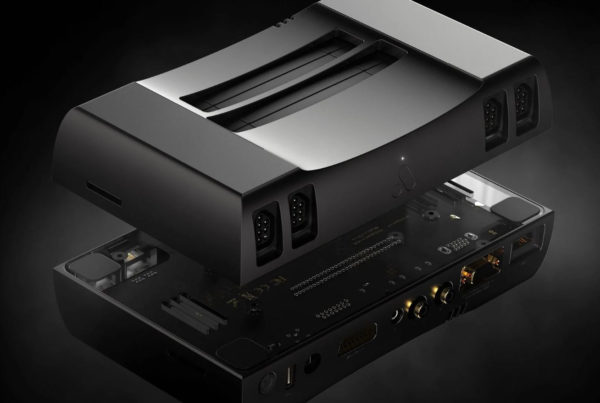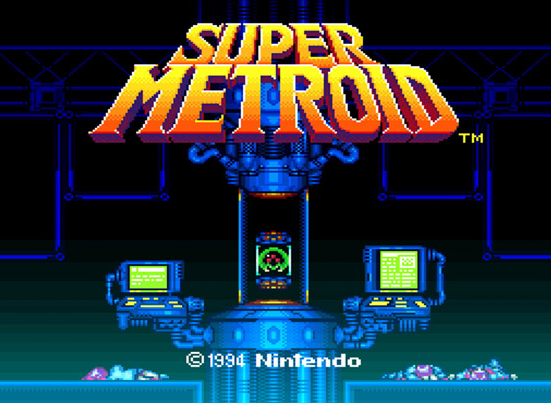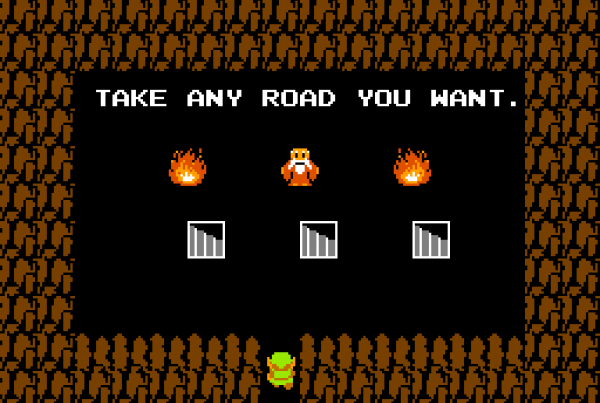Last Updated on May 6, 2021 by James Dziezynski
As an homage to my cousin Marc’s Games I Beat in 2014 blog, from time to time I’ll be adding some of the games I’ve played through in 2015 right here at Mountainous Words.
What do you get when you combine sweet, sweet ninja action, an incomprehensible plot and legions of bloodthirsty birds? Ninja Gaiden of course! While the first two games of the iconic series bask in the glow of NES fueled nostalgia, the third and final 8-bit entry in the series is by far the least understood and yet, it may very well be the best of the trio.
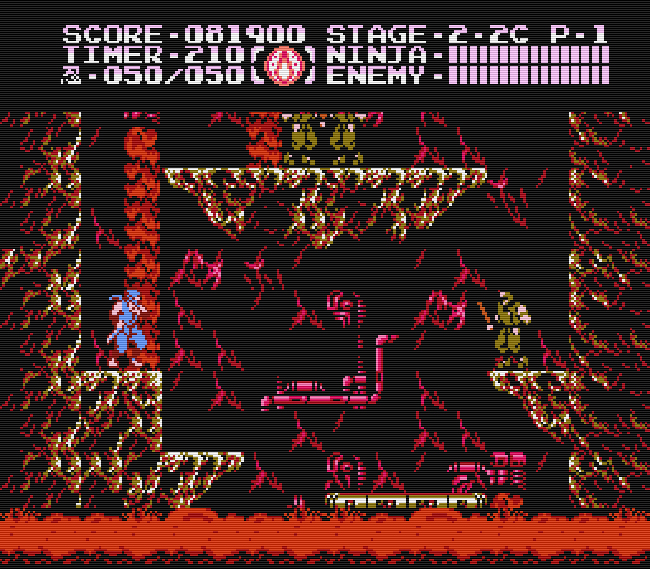
I always feel bad for the enemies stuck trundling about in a rising volcano.
Officially titled Ninja Gaiden Episode III: The Ancient Ship of Doom, it was released by Tecmo in June of 1991, a mere two months before the launch of the Super Nintendo. Gamers had already tasted 16-bit glory with the Sega Genesis and the humble NES was beginning to ride into the sunset. But that didn’t stop Tecmo from making a heck of a good game.
Admittedly, I missed the boat the first time around. My rule for “officially” beating any NES game is it must be done on an official system, using a real cartridge and without using any cheats. For the longest time, the physical game was tough to find and expensive. Add to that plenty of harsh reviews (unfair in my opinion) and it didn’t float to the top of my priority list for many years.
One of the criticisms leveled against the game is that it is too difficult and the hardships in the game are unfair. Here I have to disagree. Is it tough? Absolutely. Is it fair. Indeed. And in my opinion, fair + tough = a winning equation. The North American release was made more challenging than its Japanese counterpart by increasing damage from enemies and limiting the number of continues to 5. Neither of these facts should keep dedicated gamers from playing through the game (it takes a long time to burn through five continues). The one fair gripe about the game is a botched timer issue where in some stages, you are rewarded for playing through without dying by having the countdown timer run out, usually just before a boss battle at the end of the stage. That’s a legit error but the good news is that you’ll die all the time, rendering it a somewhat moot point. As far as sheer toughness goes, the rest of the game is fair.
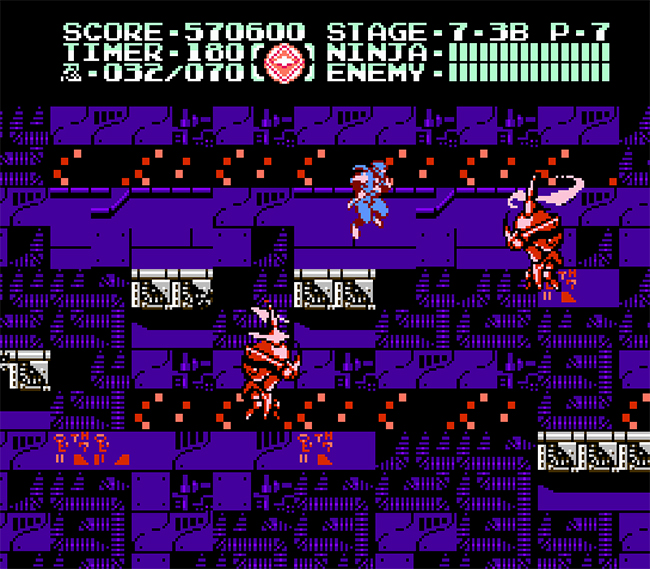
Stage 7-3B is the new Ninja Gaiden stage 6-2. In other words, you’re going to die a lot thanks to these flying torsos.
This meant that the player had to get really good at running through the stages. In some ways NG3 is easier than previous games because there’s not the dastardly re-spawning enemy issue that made the first two Ninja Gaidens a pain. Add to that the fact that most bosses are relatively easy to defeat and present predictable patterns. Act 6 also features a nice 1-UP loop that can be used to max out your player lives at 9 before moving on to the final act.
The play control is excellent and the Ninja Power items come at opportune times — the designers clearly patterned the stages to accommodate the special powers they placed along the way. Like all Ninja Gaiden games, the graphics are colorful and very well done. The music is superb; Act 4 – 2 really grew on me.
The cinema scenes, while visually impressive, cobble together a meaningless story that isn’t worth trying to comprehend. It boils down to this: Ryu must beat up aliens, then save the girl, then save the world. It’s a formula that worked for the first two games and Tecmo wasn’t about to change a thing. The ending is particularly goofy, where Ryu (possibly high on powerful marijuana-laced brownies) vows to love all living creatures, though if he excluded birds from his list it would be understandable.
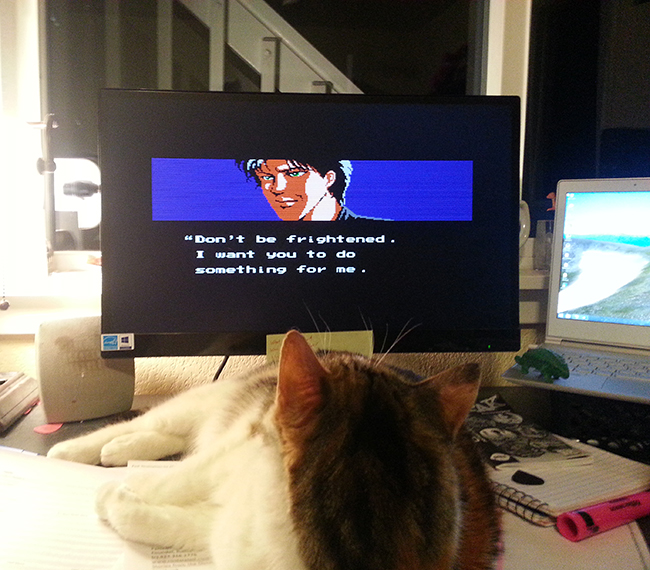
Xanadu tries to comprehend the ham-fisted plot.
By Act 3, players will learn that they can’t just smash and hack through the levels. Analyzing each section gives NG3 a level of strategy only hinted upon in the previous games. (As a side note, Act 3 also features one of the toughest bosses in the game, go figure). Replacing the nefarious birds that have knocked Ryu into countless pits are flying, mechanical shrimp that serve the same purpose. Triggering your enemies’ appearances at just the right time is part of the fun of the game, since it’s easy to get overwhelmed by the hordes if you aren’t vigilant.
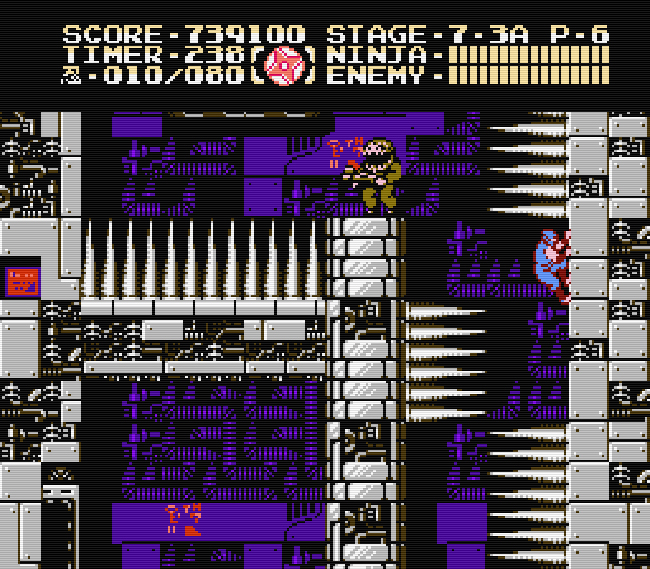
This guy carries a gun for the entire game, yet never fires a bullet. I guess he assumes the flying, mechanical shrimp will do the dirty work.
The later Acts of the game are the best, both in terms of presentation and difficulty. And like most Ninja Gaiden games, there’s a brief, brutal section where you’ll likely die many, many times before dialing in the sequence. In this case, it’s Act 7-3B, which serves as the spiritual successor to stage 6 -2 in the original game.
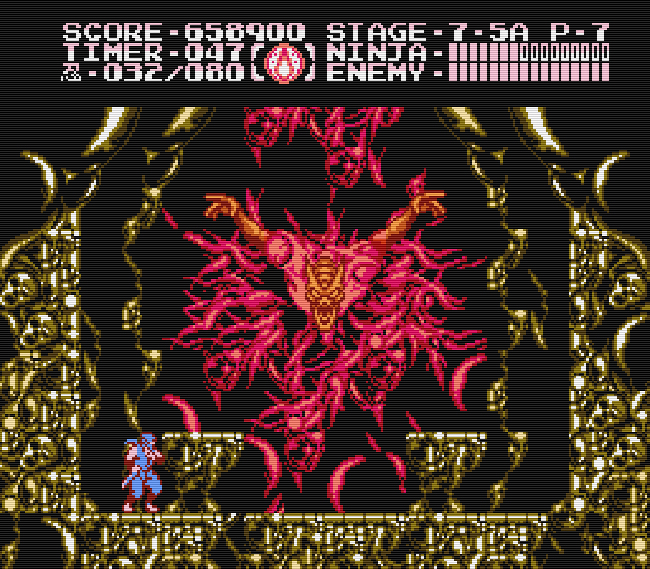
Cool, gory boss has his own website (ta-da-DUM!)
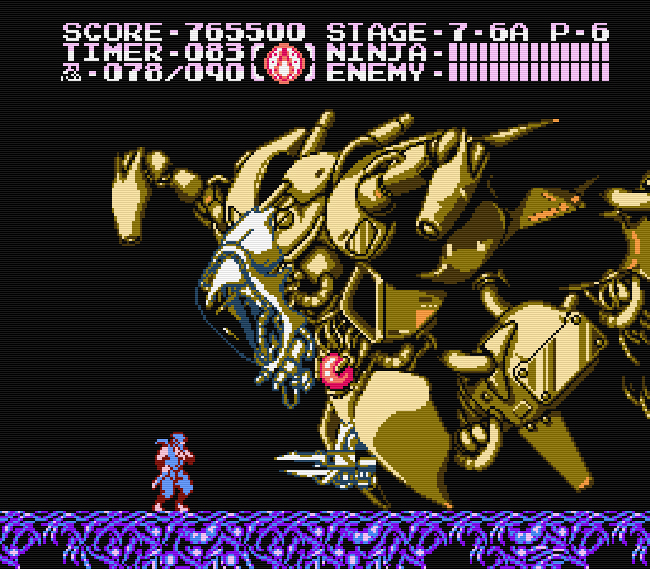
The final boss is a leftover space ship from one of the Mega Man games.
Players with focus, patience and ability will find Ninja Gaiden III one of the very best experiences on the NES. Those who are looking for quick victory will not only curse the game, they will likely never understand why the game is subtitled “The Ancient Ship of Doom”. In the end, Ninja Gaiden III shines in the same way as Castlevania III, Super C and other later releases on the NES. It’s a shame the game has a reputation for being sub-par due to impatient gamers that don’t have the chops to appreciate the strategy involved in mastering the cleverly designed levels.
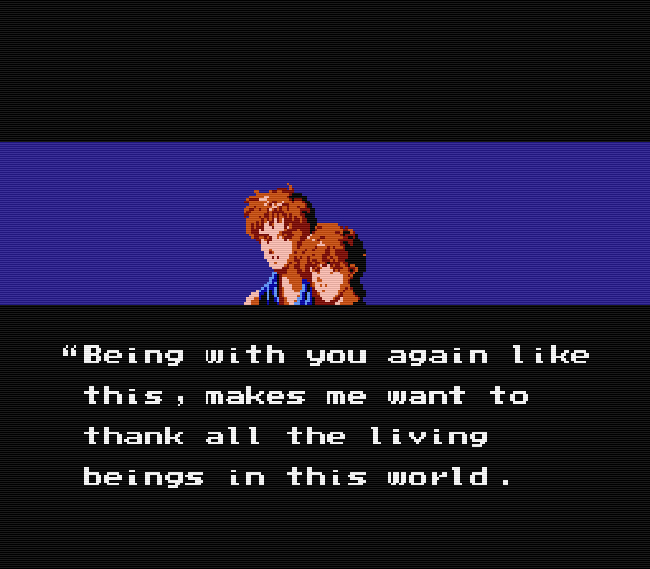
I’ve tried this pick up line like 50 times, it never works for me.
And as for the story… well, enjoy the pretty pictures because the plot is a mess. But then again, who plays NES games for their gripping narratives?



